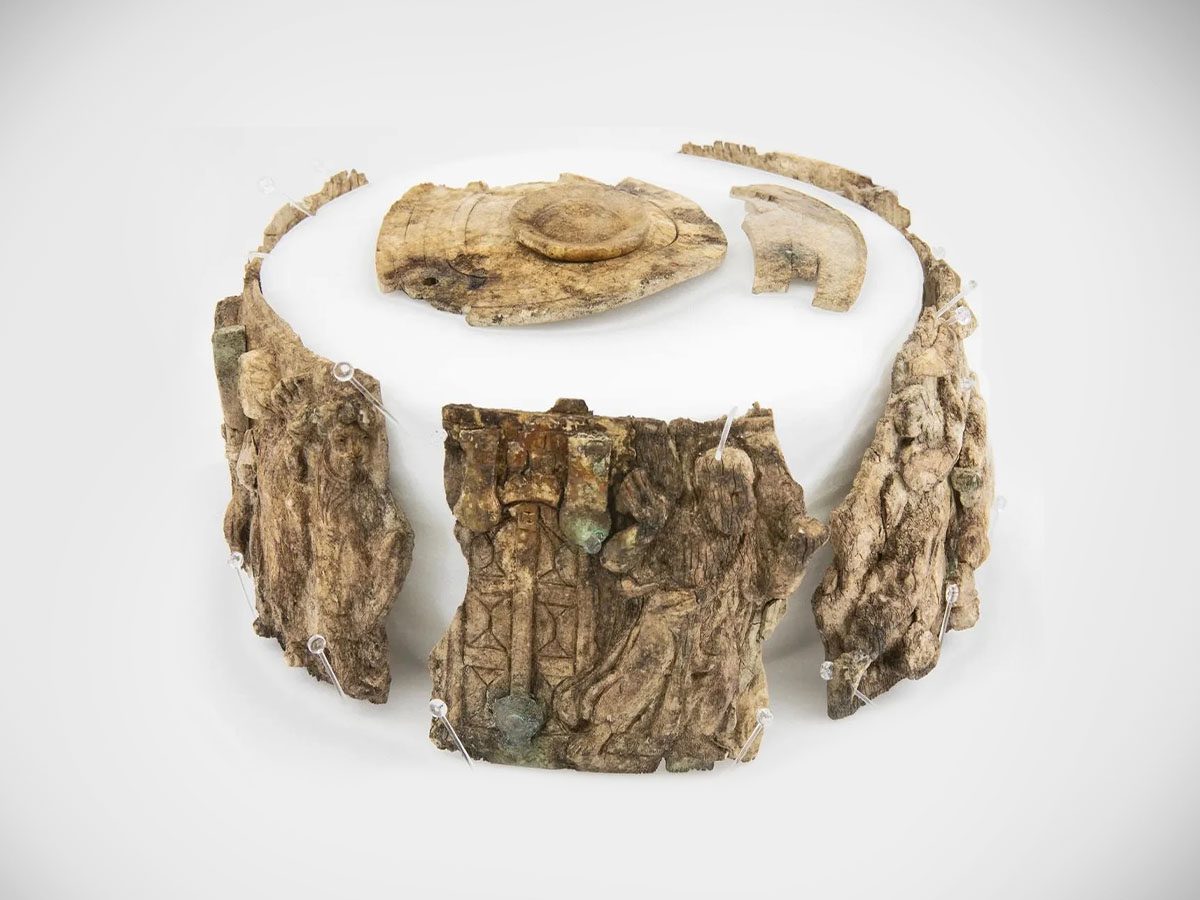
Archaeologists from Innsbruck University in southern Austria have revealed the discovery of a 1,500-year-old ivory box with apparent depictions from the scene of Moses receiving the Ten Commandments from God, as described in the book of Exodus. The box also appears to contain other biblical motifs, such as the ascension of Christ into Heaven. Researchers have been excavating the site of an ancient church in Irschen, a municipality in the Carinthian Drava Valley, since 2016. The box, known as a pyx, was first discovered two years ago and is extremely rare. “We know that this only happens once in an archaeologist’s life as a scientist. We know of around 40 ivory boxes of this kind worldwide and, as far as I know, the last time one of these was found during excavations was around 100 years ago – the few pyxes that exist are either preserved in cathedral treasures or exhibited in museums,” said lead archaeologist Gerald Grabherr.
The team delayed announcing the find due to the long restoration process involved in restoring ivory. “Ivory, especially ivory stored on the ground like in the marble shrine, absorbs moisture from its surroundings and is very soft and easily damaged in this state. In addition, uncontrolled drying out can lead to shrinkage and cracks and thus to damage that can no longer be repaired. Due to the very high humidity of 90 per cent in the marble shrine immediately after salvage, the risk of condensation and mould formation was very high, and the contents could not be allowed to dry out too quickly. This meant we had to ensure a very careful and prolonged drying process,” said Ulrike Töchterle, head of the restoration workshop in Innsbruck, who has been restoring the piece for the last two years.
The image that appears to be of Moses shows a hand in the sky placing something into the arms of a man below, who is looking away. It mirrors the account of Moses receiving the Ten Commandments from the hand of God. “This is the typical depiction of the handing over of the laws to Moses on Mount Sinai, the beginning of the covenant between God and man from the Old Testament,” said Grabherr. The other image shows a man in a two-horse chariot with a hand coming from the clouds and drawing him up into Heaven. “We assume that this is a depiction of the ascension of Christ, the fulfillment of the covenant with God,” said Grabherr. “The depiction of scenes from the Old Testament and their connection with scenes from the New Testament is typical of late antiquity and thus fits in with our pyx; however, the depiction of the Ascension of Christ with a so-called biga, a two-horse chariot, is very special and previously unknown.”
